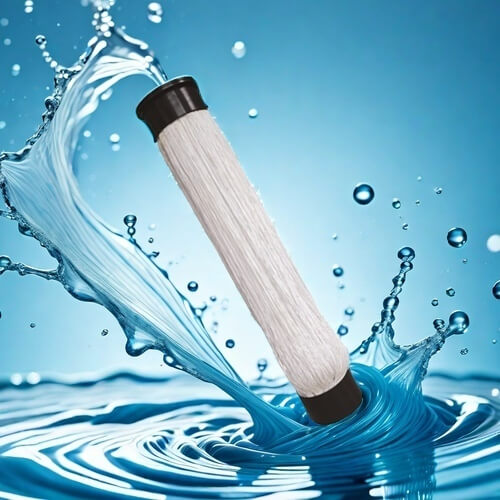Application of MBR process in wastewater treatment
The generation of wastewater is inevitable in our daily life and production processes. Water resources are the foundation of human survival and development, therefore, the treatment of wastewater is particularly important to ensure the effective recycling of water resources. MBR (Membrane Bioreactor) technology, as an efficient wastewater treatment method, has demonstrated excellent treatment effects, and its promotion and application are of great significance.
When MBR technology is applied to wastewater treatment, its membrane retention effect can be utilized to enable nitrifying bacteria to rapidly reproduce in a short reaction time, thereby achieving nitrogen and phosphorus removal with relatively ideal removal efficiency.
The biological denitrification process is mainly divided into two stages: nitrification and denitrification. The chemical principle used when directly using nitrite (NO2-) for nitrification reaction is short-range nitrification denitrification. The process is controlled at the nitrite stage to prevent its conversion to nitrate.

MBR process is usually combined with A/O (anaerobic/aerobic) biological denitrification process, which can significantly improve denitrification efficiency. The key is to strictly control the nitrification process and keep it in the nitrite stage. Related studies have shown that when treating wastewater through the A/O-MBR denitrification process, it is only necessary to control the dissolved oxygen in the aerobic section at 0.5 mg/L, and the removal rate of NH4-N and the cumulative rate of NO2– N can both exceed 90%.
Researchers have found that compared to traditional phosphorus removal processes, MBR does not significantly improve the removal efficiency in wastewater treatment. However, when anaerobic environment is added, its removal efficiency can be improved by about 50%.
Membrane bioreactor technology has numerous advantages in wastewater treatment and has achieved good application results. The MBR process not only improves the efficiency of solid-liquid separation, but also optimizes sludge concentration and hydraulic retention time (HRT), enabling better degradation of difficult to degrade substances in the reactor. Therefore, MBR technology has become one of the important innovations in the field of wastewater treatment.
In summary, MBR technology has broad application prospects in wastewater treatment due to its high efficiency and stability. With the continuous improvement of environmental protection requirements, promoting the application of MBR technology will help achieve higher levels of water resource management and environmental protection.
